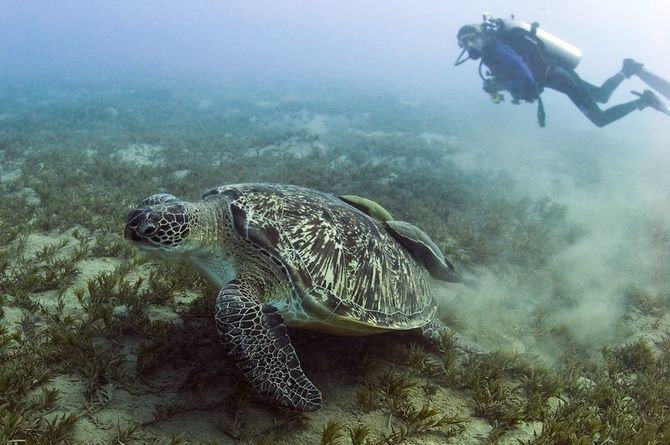Smiling turtles – HEPCA Red Sea Turtle Catalogue
In ecology, it is fundamental to be able to identify individuals within a population as this provides realistic estimates of the population size, growth rates and also migration patterns. This information is central to the development of wildlife management plans and thus it is fundamental for the conservation of the species. With marine turtles, the most frequently used technique is the flipper tagging, which consists in putting a numbered ring on the rear flippers of the animal. This method usually requires the capture and handling of the animal and has also the inconvenience that the tags can get lost because of incorrect application or because they have been bitten off. An alternative to attaching markers to wildlife is to use visual identification of individuals. This is commonly done for example with dolphins where the shape of the dorsal fin and/or the presence of marks and scars allow researchers to identify each individual. This technique has some obvious advantages: animals are not physically captured (so they are not stressed) and their behavior is not affected by the identification system. Photographic identification, in which researchers photographically capture these natural markings to identify and re-identify individuals, has proven to be a useful tool in long-term monitoring of wild animal populations. In sea turtle research, this method is quite new but has already proven to be effective when marine turtle populations are easily accessible to snorkelers and divers. In its effort to increase the scientific knowledge of marine turtles of the Egyptian Red Sea and to improve their conservation, HEPCA started the first catalogue of these animals. The catalogue is a joint effort between HEPCA, dive centers and visitors. At present pictures are being collected from different sources. This catalogue has many aims: 1) provide a long-term photographic database that is updated once per month; 2) involvement of different sectors in sea turtle conservation and 3) it can be used as a tool to spread awareness among different users. The catalogue includes at present 21 individuals found from Shark and Yolanda reef in Sharm El-Sheikh to Wadi Gimal and will be soon available online on our website. The number of re-sightings is increasing every time more. HEPCA would like to thank all the dive centers and visitors that contributed to the catalogue with their pictures.



